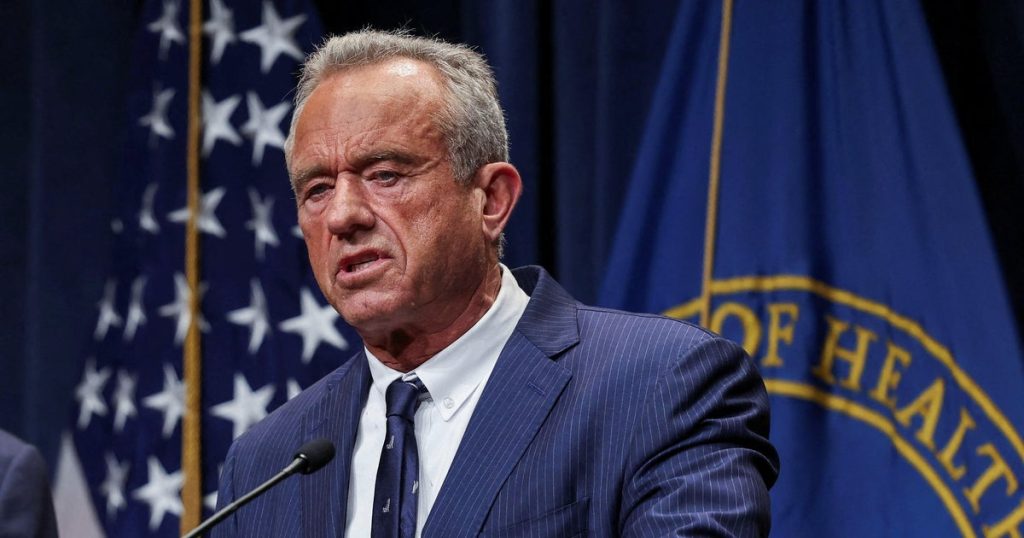A federal judge in Rhode Island has temporarily halted the Department of Health and Human Services’ (HHS) plans to implement mass layoffs and major organizational changes. The ruling comes in response to a lawsuit from 19 Democratic attorneys general, who raised concerns about the reorganization’s potential detrimental effects on public health services nationwide. Judge Melissa DuBose expressed skepticism about the rationale behind HHS’s planned restructuring, emphasizing the serious ramifications for critical health services if these plans were executed.
| Article Subheadings |
|---|
| 1) Overview of the Judge’s Ruling |
| 2) Lawsuit Details and Concerns |
| 3) Implications of HHS’s Plans |
| 4) Ongoing Layoffs and Public Health Concerns |
| 5) Future Uncertainties |
Overview of the Judge’s Ruling
In a decisive legal action, Judge Melissa DuBose of the federal court in Rhode Island has blocked HHS from enacting its planned mass layoffs and a major overhaul of its organizational structure. The judge found that the administration’s plans lack “a rational basis” and would lead to “devastating consequences” for public health infrastructure throughout the country. Her ruling highlights concerns that these sweeping changes, orchestrated during the Trump administration, could disrupt essential public health services and challenge the agency’s capacity to operate effectively.
Lawsuit Details and Concerns
The legal challenge originated in May, brought forth by 19 Democratic attorneys general, along with Washington, D.C. They sought an injunction to halt HHS’s reorganization plan, which was formally announced by HHS Secretary Robert F. Kennedy Jr. in March. The attorneys general argued that the proposed changes would:
- Disrupt healthcare services critical to the public.
- Culminate in potentially irreversible damage to key positions within HHS.
- Paralyze the agency through unnecessary confusion during a time when public health services are especially needed.
This lawsuit reflects a protective stance taken by several states, which argue that the restructuring could lead to drawing essential services away from vulnerable populations.
Implications of HHS’s Plans
The restructuring proposal put forth by HHS involves significant layoffs—reportedly affecting around 10,000 employees. HHS aims to create a new agency called the Administration for a Healthy America (AHA), intended to oversee various health initiatives. However, Judge DuBose commented on the potential complications arising from such a drastic restructuring, which could involve relocating numerous offices and teams within the agency.
Her decision pointed out that HHS has not provided adequate evidence to support its claims that public health services would remain unaffected during this tumultuous transition. Instead, she noted that the reorganization’s implementation might hinder access to crucial health resources and create chaos in grant management and training programs.
Ongoing Layoffs and Public Health Concerns
Despite the judge’s ruling and the ongoing litigation, many employees have received layoff notices, leaving them in a state of uncertainty; however, they are still receiving pay while the injunction is in place. Among those targeted are healthcare professionals responsible for essential services ranging from cancer screenings to early childhood education. The New York Attorney General, James, emphasized the vital role HHS plays in safeguarding public health and the social safety net, particularly during critical health emergencies.
Earlier this year, a federal court in California blocked similar mass layoffs initiated by the Trump administration, dealing another setback for the reorganization efforts at HHS. The Supreme Court is currently evaluating whether to lift the injunction, which may allow the administration to proceed with its controversial restructuring plans.
Future Uncertainties
As federal health officials continue planning for potential next steps, questions linger over how the HHS will navigate the implications of these rulings. Although Secretary Kennedy has claimed that steps are in place to implement some mergers and organizational changes, the current legal constraints are limiting their ability to act. There are indications that the health agencies are already preparing for the eventual transfer of teams into the proposed AHA, should the injunction be lifted, although the timing and structure of this transfer remain unclear.
Moreover, statements regarding the potential for further layoffs send a signal of instability within HHS. The Secretary has confirmed that the administration may demand additional cuts to balance the numbers, raising concerns among health officials. Any further cuts could exacerbate gaps in essential services that many rely upon, particularly in areas of crisis intervention and public health.
| No. | Key Points |
|---|---|
| 1 | The judge ruled that there is no rational basis for the reorganization plans proposed by HHS. |
| 2 | The lawsuit was initiated by 19 Democratic states and Washington, D.C., to challenge the mass layoffs. |
| 3 | HHS’s restructuring would severely impact public health services nationwide. |
| 4 | Current employees remain on administrative leave while the legal proceedings unfold. |
| 5 | Further layoffs may be required by the Trump administration, raising concerns over service continuity. |
Summary
In a significant ruling, the federal judge’s decision to block the HHS restructuring reflects broader concerns about the integrity of public health services in the U.S. This situation underscores ongoing tensions between state officials and federal authorities over health management, especially in a landscape marked by public health crises. As the litigation continues to unfold, the future of HHS remains uncertain, with implications for both employees and the public services they support.
Frequently Asked Questions
Question: What prompted the lawsuit against HHS?
The lawsuit was prompted by concerns from 19 Democratic attorneys general who believed that HHS’s reorganization and mass layoffs would severely disrupt essential public health services nationwide.
Question: What is the current status of HHS employees facing layoffs?
Most employees who received layoff notices remain on administrative leave but continue to receive their salaries while the injunction against layoffs is in place.
Question: What might happen next concerning HHS’s restructuring plans?
Further proceedings in the case will determine the fate of HHS’s restructuring plans, with potential outcomes ranging from full implementation of the changes to a complete halt on the reorganization.


